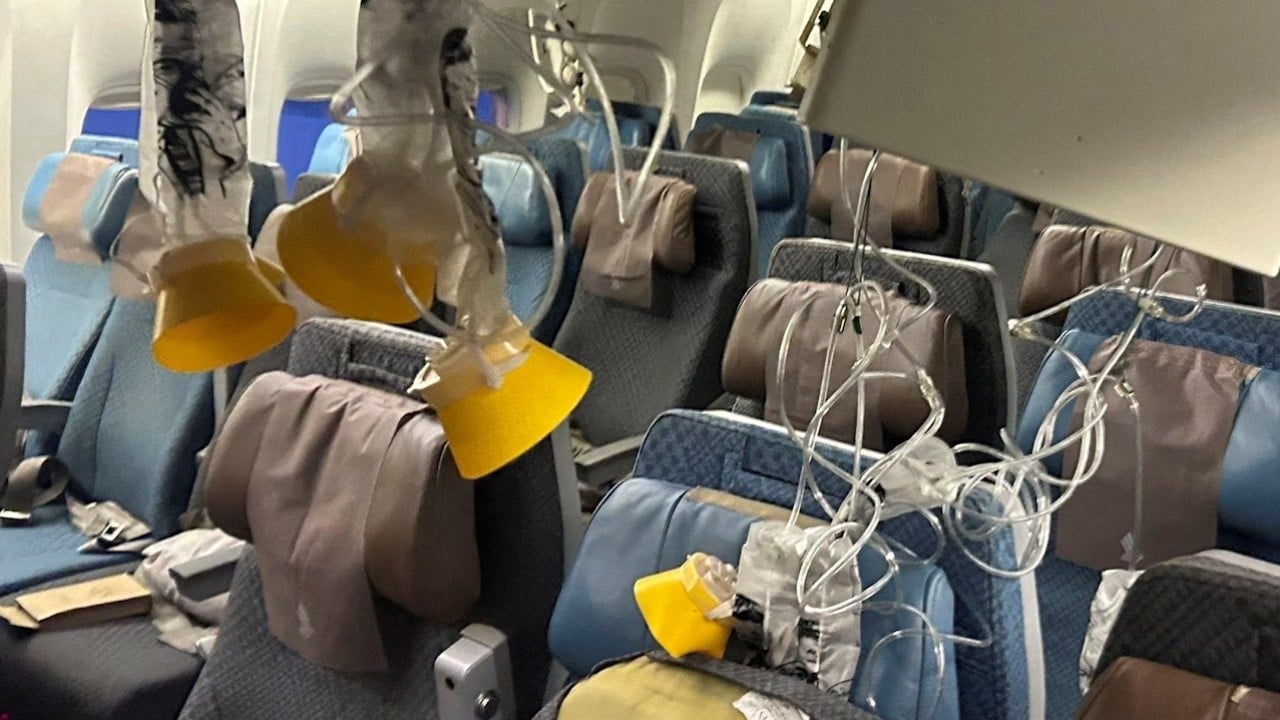Singapore Airlines turbulence: some SQ321 flight passengers need spinal operations, Bangkok hospital says
- 20 people remained in intensive care after the Boeing 777, which was flying from London to Singapore, suddenly descended sharply after hitting turbulence Tuesday
- Srinakarin Hospital, which has treated more than 100 people, said other local hospitals have been asked to lend their best specialists to assist in the treatments

Many of the more seriously injured people who were on the Singapore Airlines flight that hit severe turbulence need operations on their spines, a Bangkok hospital said Thursday.
Twenty people remained in intensive care and a 73-year-old British man died after the Boeing 777, which was flying from London’s Heathrow Airport to Singapore, suddenly descended sharply after hitting the turbulence over the Andaman Sea on Tuesday.
A public relations officer for Samitivej Srinakarin Hospital, which has treated more than 100 people hurt from the ordeal, said that other local hospitals have been asked to lend their best specialists to assist in the treatments. He asked not to be named because of hospital policy.

Passengers have described the “sheer terror” of the aircraft shuddering, loose items flying and injured people lying paralysed on the floor of the plane.
It remains unclear what exactly caused the turbulence that sent the plane, which was carrying 211 passengers and 18 crew members, on an 1,800-metre (6,000-foot) descent in about three minutes. The flight from London to Singapore was diverted to Thailand.
In one of the latest accounts of the chaos on board, 43-year-old Malaysian Amelia Lim described finding herself face down on the floor.
“I was so afraid … I could see so many individuals on the floor, they were all bleeding. There was blood on the floor as well as on the people,” she told the online Malay Mail newspaper.

